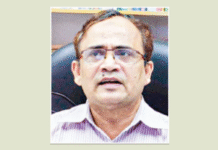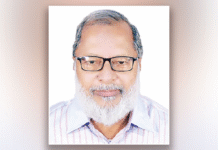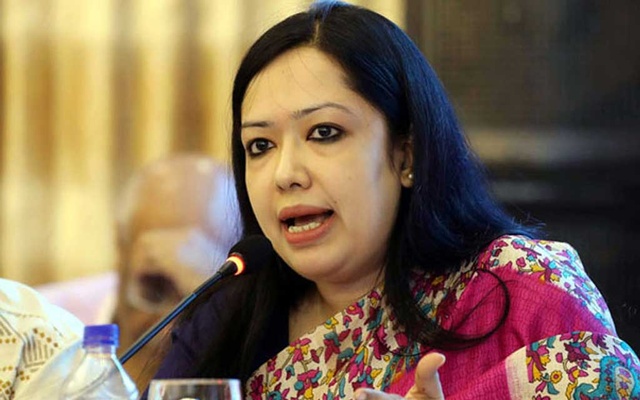TBS

It has now been a year since the transformative events of July 2024—tagged “revolution” by some—reverberated through the nation’s political landscape. As we look back, the intertwined questions of whether 5 August 2024, represented institutional drift or a true shift, and whether the events since have marked a genuine recalibration or merely a reshuffling of elite power, loom large in our collective appraisal.
A pressing question
Institutional drift occurs when formal rules and structures remain unchanged even as the environment around them evolves, gradually undermining their original purposes. Institutional shift, by contrast, is a conscious and intentional reconfiguration of those very structures—an act of deliberate recalibration rather than passive adaptation.
Increasingly, the aftermath of the 2024 upheaval appears less a tidy transition than a hybrid moment—an emphatic institutional shift propelled by the dramatic collapse of the Awami League’s fifteen-year reign, yet interwoven with the slow-moving currents of drift that set the stage for rupture. The fallen regime’s relentless recourse to repression—bullets and closures—ultimately set the conditions for its own undoing.
The regime change was an unpredictable bifurcation, catalysed by mass public outrage, cascading elite defections, and deepening economic malaise, each amplifying the other. The student movement that spearheaded this upheaval lacked a central figurehead, yet managed to coordinate effectively, its decentralised energy proving both resilient and adaptive.
Such profound systemic change resists immediate return to a new equilibrium. Instead, the system has wavered—oscillating, bifurcating, and, at times, threatening to spiral. The crisis, long in gestation, was enabled by institutional drift: years in which formal rules were quietly eroded by networks of patronage and coercion, laying a combustible foundation. And yet, amidst the turbulence, the economy was buoyed by robust exports and surging remittances, even as domestic and global uncertainties, energy shortage, bankrupt banks and on again off again institutional dysfunction stalled investment, employment and real wages.
The turbulence has enabled extractive actors—old and new–to surge into the vacuum as claimants to the spoils. The descent into disorder in the aftermath of August 5—marked by cascading breaches across governance, law enforcement, and civil society—was not mere happenstance. Factional infighting, disinformation campaigns, and the absence of institutional buffers have left the polity highly susceptible to shock. Each street protest, viral rumor, or episode of mob violence reverberates through fragile institutions and the remnants loyal to the fallen regime.
The Interim Government has credibly committed to hold elections before Ramadan in February 2026. It has sought to restore legitimacy through the work of the National Consensus Commission (NCC). This unfolding shift remains vulnerable to reversal, dilution, or co-optation. Whether a true transformation will emerge, or whether the momentum will be absorbed back into familiar channels of power, is a pressing question.
Change certain, reforms not
The reading of the July Charter by the Chief Adviser expressed an ambition to confer constitutional and legal recognition upon the events of July 36—a historic juncture in the nation’s journey since its birth as an independent and sovereign state in 1971. It is in the self interest of the parties brought to the table by the NCC to confer such recognition no matter what their rivals in the table choose to do. Each of them are better off giving the recognition even if their rivals don’t. Cooperation on this question is a dominant strategy simply because the legitimacy of each party’s access to political power hinges on the legitimacy of the forces that ousted the regime the Bangladesh polity rejected. Their precommitment to the recognition is therefore destined to happen.
The NCC has brokered agreement among more than thirty political parties on reportedly fourteen out of nineteen core reform proposals. Notable among these are the proposed reforms to Article 70—loosening the grip of party leadership over individual MPs; the strengthening of parliamentary oversight and decentralisation of both judicial and electoral institutions; the introduction of term limits for the office of prime minister; and the establishment of an independent Police Commission.
Beneath this surface of consensus, significant fault lines persist. The architecture and composition of a prospective caretaker government, the creation of a bicameral legislature with an upper house, the electoral process for one hundred reserved seats for women, the distribution of presidential powers, and the foundational principles of the state—all remain sources of contention.
While the July Charter provides a broad framework for unity, its ultimate promise depends on bridging the ideological chasms and establishing mechanisms for credible, durable implementation. In this, Bangladesh’s experience in the past twelve months offers a compelling study in the art of negotiated institutional change—a delicate balancing between the weight of historical constraints and the aspirations for a more democratic, representative order. Whether this process is ultimately subsumed by the inertia of the past or yields a genuine transformation is best answered in a time machine back to the future. Your guess is as good as mine.
A key learning from our own history of development since inception is that reforms are embedded within a system where change is episodic and often diluted. Reforms arrive in increments, quick to be sanded down by the frictions of vested interests. Into this landscape, the 2024 convulsion injected a volatile energy, disrupting the long-standing institutional inertia and elite accommodation. Electoral reforms, tasked with dismantling the mechanisms that once secured unyielding incumbency, now languish in ambiguity. There is broad consensus about what must be abandoned but little on what must replace it.
Civil administration, for its part, tends to favor drift over transformation, relying on subtle, informal modulation of procedures rather than the reinvention of structures. This predilection for the path of least resistance reveals itself as a cacophony of competing visions with no clear ascendancy, a political flux where drift is both expedient and unaccountable. The architecture of power remains nominally intact. In such an environment, drift is not merely the absence of change, but it’s also a camouflage.
Will history repeat, again!
Elites debate incremental “soft” reforms, but the public, having grown skeptical of cosmetic gestures, clamours for a more profound change. The trauma of the July killings and the fall of the autocrat signal not just the collapse of a regime, but the implosion of a decades-old system built upon patronage, repression, and the systematic erosion of institutional legitimacy. The fallen regime left a hollowed polity in its wake. The IG, inheriting this precarious landscape, promised reform. Entrenched bureaucratic, political, and economic elites have proven adept at resisting meaningful inclusion and restructuring.
The phenomenon of elite recalibration without systemic reform is not novel in Bangladesh’s political evolution. It was evident in the aftermath of the 1971 War of Liberation, and again after the fall of the military autocrat in 1990. On each occasion, subsequent regimes have struggled to marshal the institutional depth and societal mobilisation necessary for a true architectural shift—one that might inoculate the system against the drift back toward extraction and exclusion.
Bangladesh now stands poised between the inertia of its past and the test of its societal resolve for genuine transformation. Whether it devolves into yet another episode of elite adaptation—recalibration without true reform—or seeds the institutional shift required for a more representative and accountable order, will define the nation’s trajectory.
Zahid Hussain is a former chief economist at The World Bank, Dhaka Office.









